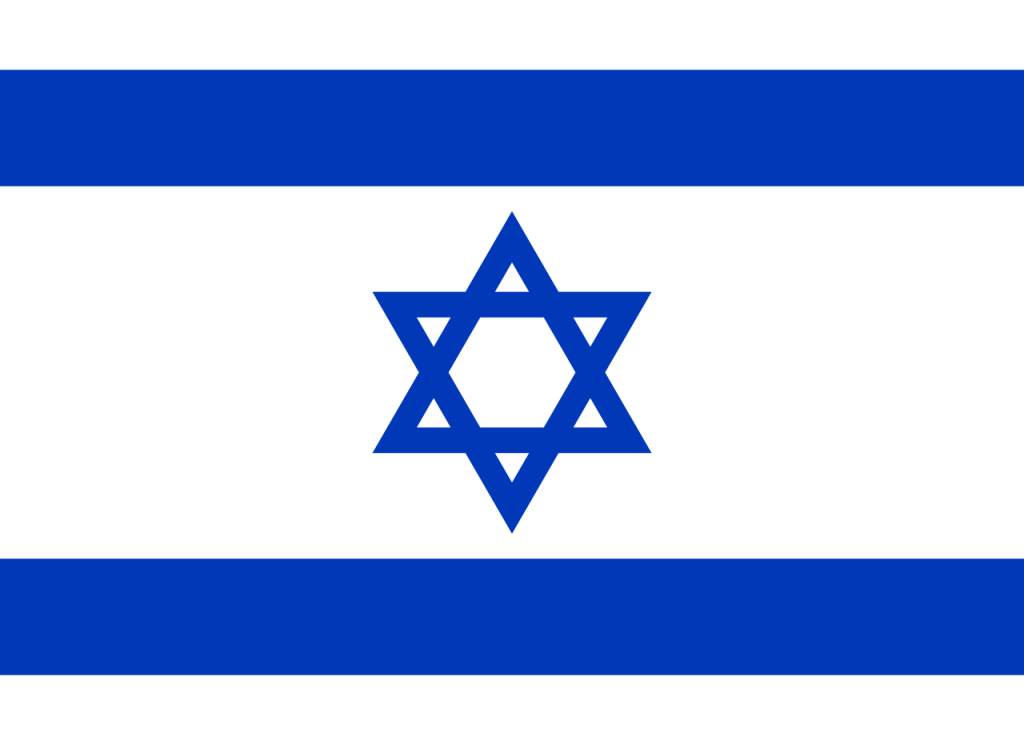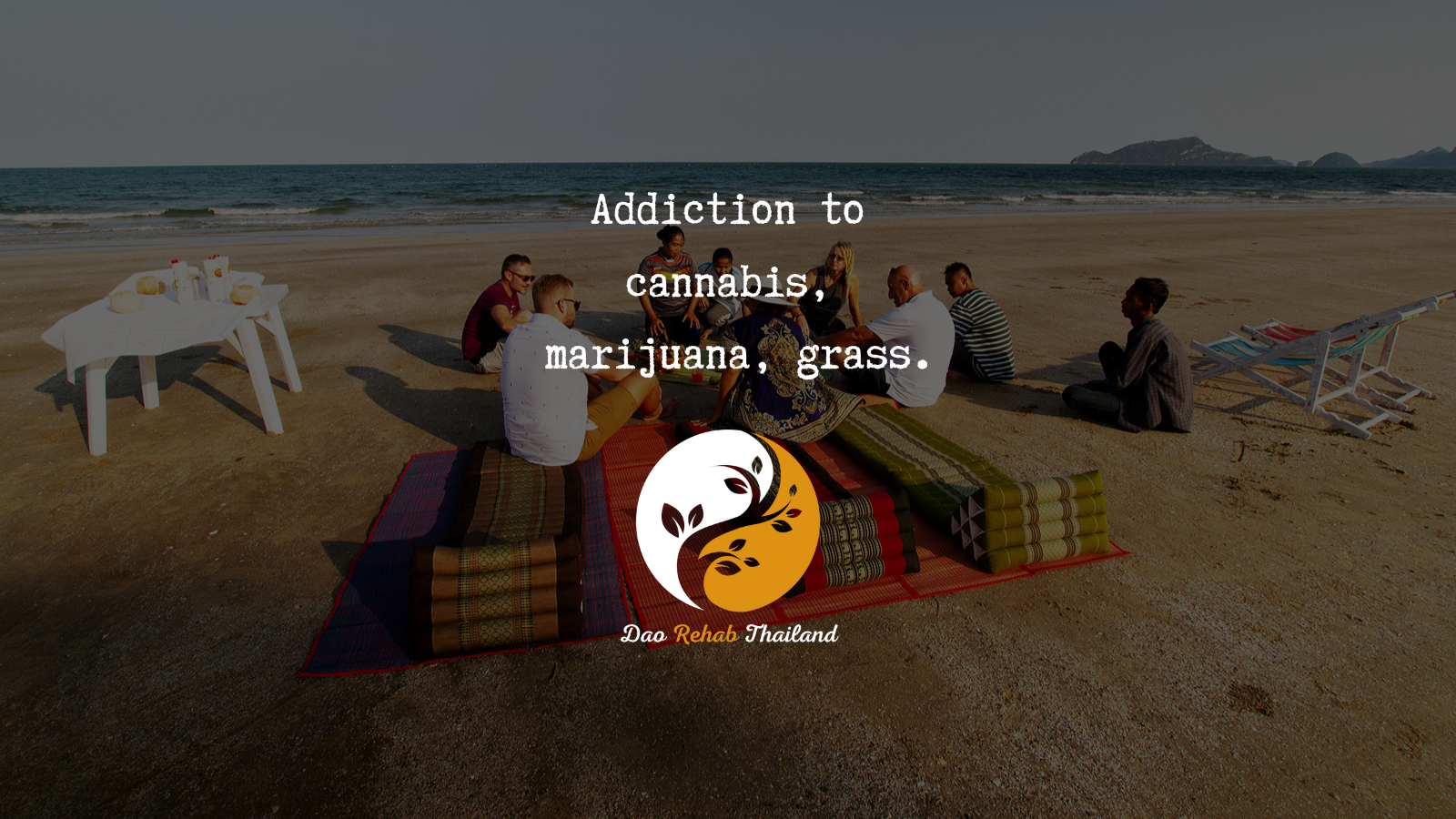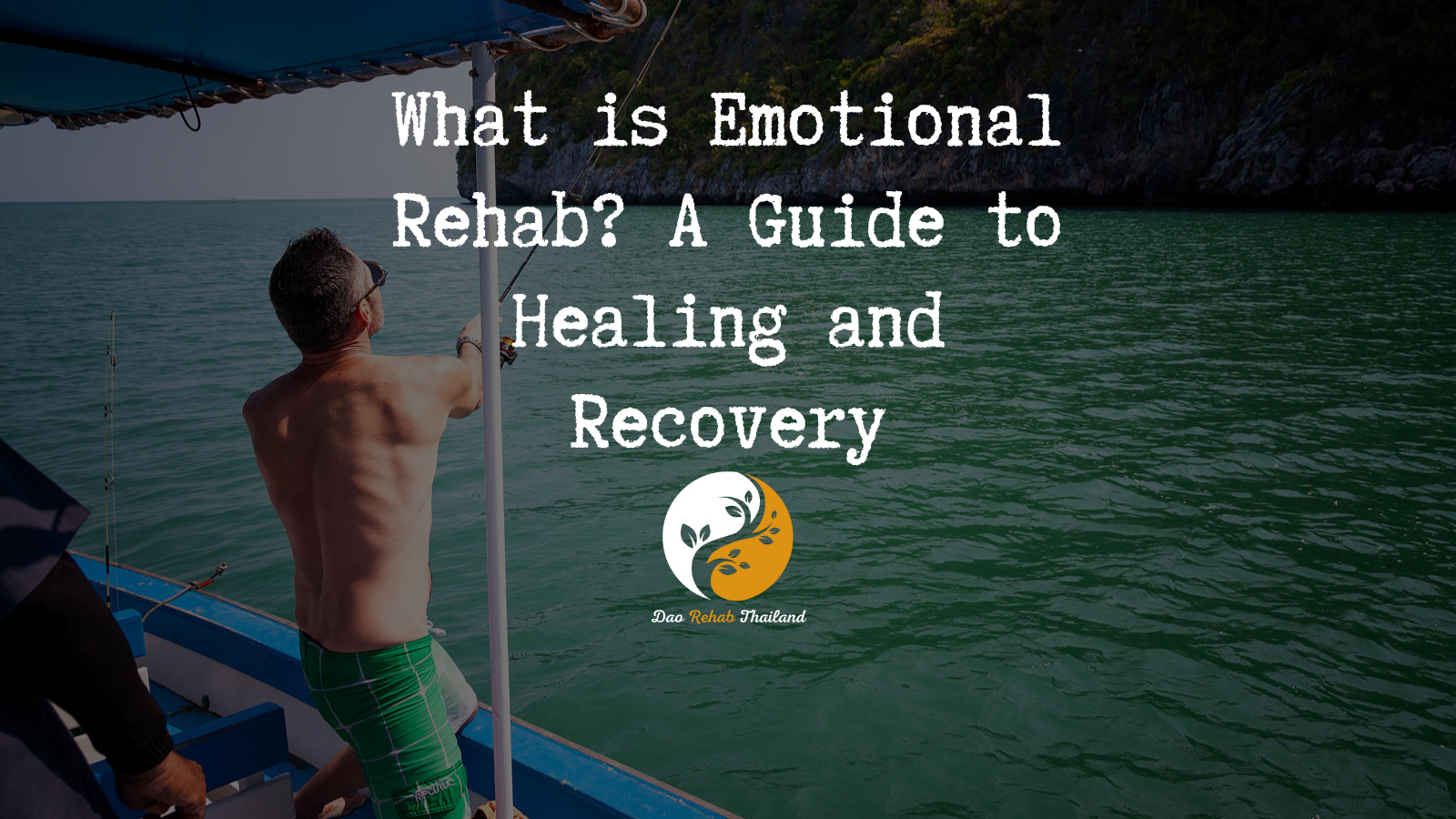
The Facts about Alcohol Cravings and How to Beat Them
The Facts about Alcohol Cravings and How to Beat Them
“Turning the impossible into possible”

"Detox from Alcohol at a Luxury Holistic Center in Thailand and Israel"

Detox from Alcohol
For those of us who have grown comfortable in our recoveries, the unexpected arrival of alcohol cravings can be really disorienting. Our recoveries are strong, we have trusted communities and support networks around us and we’ve transitioned into an easier stage in recovery where we don’t grip so tightly onto sobriety. But then a craving comes along and triggers us. And all of a sudden, no matter how long we’ve been in recovery, we think we might go about drinking safely.
Although our alcohol cravings have become less frequent or completely unfamiliar since the first days of our recoveries, the effects of alcohol cravings are always the same. And when we give credence to these cravings, we might mislead ourselves into erroneous thinking (or even drinking): we may question whether we actually have the disease of addiction or we may focus on the highlights of our active addiction and forget its countless dangers or any number of stories our addiction might spin for us.
In this article, we’ll explain the different types of cravings and discuss our best options to beat those cravings and refocus on the natural, long-lasting rewards of recovery.
"Holistic Center for Trauma, Addiction, and Mental Imbalance Treatment in Thailand"
“Come to the beginning of the journey to freedom from addiction to alcohol, drugs, and pills, and rediscover your life within the quiet embrace of DaoTherapy Rehab in Thailand—where holistic healing meets empowering recovery.”
DaoTherapy Holistic Rehab
Key Elements of Subutex Alcohol:
Medical Supervision: Alcohol detox must be conducted under medical supervision, as the body may experience withdrawal symptoms. These can include nausea, anxiety, muscle aches, and insomnia. A medical team will monitor and manage these symptoms to ensure the patient’s safety and comfort.
Holistic Therapies:
Holistic Therapies: Many detox programs incorporate holistic therapies such as mindfulness, yoga, and meditation to help individuals cope with stress and anxiety during the detox process. These therapies support the mind-body connection and contribute to overall recovery.
Tapering Process
Tapering Process: Alcohol detox often involves a gradual tapering of the drug to reduce withdrawal severity. Doctors will slowly decrease the dosage over time to allow the body to adjust to lower levels of the substance.
Psychological Support:
Psychological Support: Like any addiction recovery process, detox from Alcohol includes psychological support. This can involve counseling, therapy, or support groups to address the mental and emotional aspects of addiction.
Post-Detox Treatment:
Post-Detox Treatment: After completing detox, continuing treatment is crucial to prevent relapse. This often includes participation in ongoing therapy, group support, and the development of new coping strategies to maintain sobriety.
The Facts about Alcohol Cravings and How to Beat Them
Alcohol cravings are intense urges or desires to drink that can be triggered by environmental cues, stress, or even certain emotions. Understanding cravings and having strategies to manage them are essential for recovery from alcohol addiction. Here’s what you need to know about alcohol cravings and how to beat them:
Understanding Alcohol Cravings
1. What Causes Cravings?
– Physical Dependence: Over time, the body adapts to alcohol, leading to a chemical dependency. When alcohol use stops, the brain may signal a craving as it attempts to rebalance itself.
– Emotional Triggers: Emotions like stress, sadness, loneliness, or anxiety can trigger cravings, as individuals may have previously used alcohol to cope with these feelings.
– Environmental Cues: Being around places, people, or situations associated with drinking, like parties, bars, or familiar social gatherings, can spark a craving.
– Habits and Routines: Repeated drinking at specific times or in certain contexts (e.g., after work or at social events) can condition the brain to expect alcohol in those situations.
2. How Long Do Cravings Last?
– Cravings often peak within the first few months of abstinence but can decrease in frequency and intensity with time. Most cravings last only a few minutes, although they may feel intense during that period.
3. The Role of Brain Chemistry
– Alcohol releases dopamine, a “feel-good” neurotransmitter, which reinforces its pleasurable effects. With repeated use, the brain associates alcohol with pleasure, creating a cycle that strengthens cravings.
How to Beat Alcohol Cravings
1. Identify and Avoid Triggers
– Recognize common triggers and make plans to avoid or cope with them. If social situations or certain places increase the urge to drink, consider finding new activities or environments.
2. Develop Healthy Distractions
– Engage in activities that occupy your mind and body, like exercise, cooking, or a hobby. Redirecting your attention can help reduce the intensity of cravings.
3. Use Deep Breathing and Relaxation Techniques
– Techniques like deep breathing, meditation, and mindfulness can help you stay calm during a craving. Practicing these methods regularly builds resilience and aids in reducing stress, a common trigger.
4. Challenge Your Thoughts
– When cravings arise, remind yourself of the negative consequences of drinking and the positive reasons you chose sobriety. Reframing cravings as temporary feelings, not commands to act on, can strengthen your willpower.
5. Practice the “Urge Surfing” Technique
– Imagine cravings as waves that will pass. Acknowledge the craving, stay present with it, and “surf” through it without giving in. Remind yourself that cravings will naturally decrease if you don’t act on them.
6. Build a Support System
– Friends, family, and support groups like AA or SMART Recovery can provide encouragement and accountability. Reach out to someone in your support network when cravings are strong.
7. Set Small, Attainable Goals
– Focus on staying sober one day at a time or even one hour at a time if needed. Small milestones make the journey feel manageable and reinforce your progress.
8. Consider Medication Options
– Medication-assisted treatments, like naltrexone, acamprosate, or disulfiram, can help manage cravings. Talk to a healthcare provider about whether medication might be a helpful addition to your recovery plan.
9. Keep a “Why” List
– Write down all the reasons why you want to quit drinking. Keeping this list visible or accessible on your phone can serve as a reminder when cravings strike.
10. Focus on Physical Health
– Regular exercise, balanced nutrition, and good sleep improve overall well-being and reduce stress. Physical health plays a significant role in maintaining emotional stability, which helps manage cravings.
Long-Term Strategies for Managing Cravings
– Develop New Routines: Create a routine that doesn’t involve alcohol, such as evening walks, joining a fitness class, or engaging in social activities that don’t center around drinking.
– Continued Therapy and Counseling: Cognitive behavioral therapy (CBT) and other forms of counseling help address the underlying thoughts and emotions tied to drinking and build long-term coping strategies.
– Practice Self-Compassion: Recognize that cravings are a natural part of recovery and don’t define your success. Progress may involve setbacks, but each craving resisted strengthens your resilience.
Conclusion
Beating alcohol cravings requires a combination of mental, emotional, and practical strategies. By understanding what triggers cravings and using tools like relaxation techniques, support networks, and distraction methods, you can manage and reduce the urge to drink over time. With practice, cravings will diminish, and your ability to enjoy a sober, fulfilling life will continue to grow.

contact us
Contact us with your questions
We would love to speak with you! Feel free to reach out with any questions.

get in touch
Schedule a free consultation
Schedule a free consultation with our team and let’s make things happen!
Your Brain Is to Blame for Cravings
Cravings are caused by our brain, which is responsible for creating the strong urge to drink, even after we’ve decided to stop. Understanding how the brain creates cravings can help us manage them more effectively.
How Does the Brain Create Cravings?
Our brain naturally seeks ways to experience pleasure, and alcohol (like other addictive substances) releases dopamine, a neurotransmitter that creates a feeling of enjoyment. Over time, the brain forms strong connections between drinking and feeling good, causing it to want to recreate this experience repeatedly.
Why Do Cravings Keep Appearing?
Even after quitting alcohol, the connections created in the brain don’t disappear. Certain triggers, like events, emotions, or places that remind us of the time we used to drink, can reignite the craving. The brain remembers the pleasure associated with drinking and activates the urge to recreate it.
Ways to Cope with Cravings
Cravings usually last only a few minutes, and by understanding that it’s a chemical reaction in the brain, we can take steps to overcome them. Here are some methods:
1. Relaxation Techniques and Meditation – Deep breathing and meditation calm the nervous system and help us get through the craving without acting on it.
2. Distraction – Find an activity to distract you, like exercising, reading, or taking a short walk.
3. Reminders of Your Reasons – Keep reminders of your reasons for quitting drinking in accessible places, like on your phone, to reinforce your goals during a craving.
The Control Is in Our Hands
Each time we resist a craving, the brain learns to overcome it. Over time, cravings decrease, and we grow stronger in facing them. Understanding the chemical basis of cravings allows us to handle them with confidence and control.
How Should We Handle Cravings for Alcohol?
Handling cravings for alcohol requires a mix of awareness, practical strategies, and support. Here’s a guide to effectively managing these urges:
1. Acknowledge the Craving
– Recognize and accept the craving without judgment. Remind yourself that it’s a temporary sensation caused by past habits, not an instruction to act. By acknowledging it calmly, you take the first step toward controlling it.
2. Use Distraction Techniques
– Engage in a distracting activity to redirect your focus, such as exercising, reading, doing a hobby, or going for a walk. Redirecting your attention helps minimize the craving’s intensity and duration.
3. Practice Deep Breathing or Meditation
– Deep breathing or mindfulness meditation helps calm the nervous system. Try slow, deep breaths or focus on being present with your surroundings. This helps reduce anxiety and strengthens your control over impulses.
4. Challenge and Reframe Your Thoughts
– When a craving hits, remind yourself of your reasons for quitting, such as health goals, relationships, or personal growth. Recognize thoughts romanticizing alcohol and reframe them by recalling the negative impacts drinking had on your life.
5. Apply the “Urge Surfing” Technique
– Think of cravings as waves that rise and fall. Let yourself “surf” through the craving without giving in, knowing that it will eventually pass. This technique strengthens resilience against cravings over time.
6. Avoid Triggers When Possible
– Identify and avoid specific people, places, or situations that may trigger a desire to drink, especially during early recovery. Changing your routine to reduce exposure to triggers can make a big difference.
7. Reach Out for Support
– When cravings feel overwhelming, talk to someone in your support network—a friend, family member, or sponsor. A quick check-in can provide the encouragement you need to stay strong.
8. Use a Journal to Reflect on Cravings
– Keep a journal to track when cravings arise, what may have triggered them, and how you managed. Over time, this can help you understand patterns and improve your strategies for coping.
9. Remind Yourself of Your Progress
– Reflect on how far you’ve come since deciding to quit. Acknowledge each small success, and celebrate milestones in your recovery journey to reinforce your motivation.
10. Consider Professional Help if Needed
– For ongoing or intense cravings, therapy and support groups like Alcoholics Anonymous (AA) or SMART Recovery provide proven frameworks to help manage urges. Counseling, particularly cognitive behavioral therapy (CBT), can also provide tools for handling cravings.
By developing a toolkit of these strategies, you can handle cravings more confidently and continue progressing on your journey to a healthier, sober life.
Crafting a Plan to Curb Our Cravings for Alcohol
Creating a structured plan to manage and reduce cravings for alcohol is a powerful tool in maintaining sobriety. A well-crafted plan provides clear strategies, alternative actions, and a support system to help you through moments of temptation. Here’s a step-by-step guide to crafting your own plan:
1. Identify Triggers
– Personal Triggers: Write down specific people, places, or emotions that increase your desire to drink, like social gatherings, stress, loneliness, or certain locations.
– Plan for Avoidance or Preparation: Make a plan to avoid these triggers when possible, or prepare yourself with specific coping mechanisms if avoidance isn’t an option.
2. Set Short-Term and Long-Term Goals
– Short-Term Goals: Focus on smaller, achievable goals like “I won’t drink for the next 24 hours” or “I’ll get through this weekend sober.” This approach makes each day feel more manageable.
– Long-Term Goals: Write down your broader objectives, such as improved health, stronger relationships, or professional success, to keep you motivated over time.
3. Develop Healthy Alternatives to Drinking
– **Distractions**: List enjoyable activities that engage your mind and body, like hobbies, sports, exercise, reading, or creative pursuits. These can serve as quick distractions when cravings strike.
– **Healthy Outlets for Emotions**: Practice mindfulness, deep breathing exercises, journaling, or talking to someone supportive. These outlets can help you process stress and other emotions without turning to alcohol.
4. Build a Support Network
– Identify Your Allies: Note down friends, family members, support groups, or mentors who understand your goals and can offer encouragement and accountability.
– Contact List: Have a list of people you can reach out to during intense cravings. A quick conversation with someone supportive can make a big difference.
5. Create a Cravings Management Toolkit
– On-the-Go Toolkit: Have strategies or items you can easily access, like a small journal to jot down cravings, a stress ball, or a list of reasons for quitting saved on your phone.
– Structured Plan for Managing Cravings: Decide on specific actions to take when a craving occurs, such as calling a friend, taking a walk, or practicing deep breathing.
6. Schedule Regular Self-Check-Ins
– Daily Reflection: Take a few minutes each day to assess how you felt, whether any cravings occurred, and how you handled them. Use this reflection to identify what worked well and adjust your plan if needed.
– Weekly or Monthly Progress Review: Track your successes and any areas for improvement. This can motivate you and give you a sense of accomplishment.
7. Write Down Your “Why”
– **Motivational Reminder**: Write out why you’re committed to sobriety, whether it’s for health, relationships, career, or personal growth. Keep this “why” somewhere accessible to remind yourself during difficult moments.
8. Celebrate Milestones
– Small Rewards: Set up small rewards for staying sober over certain timeframes, like a favorite meal, a movie night, or a new book.
– Acknowledge Progress: Take time to acknowledge how far you’ve come, reinforcing the positive changes you’re making in your life.
9. Stay Flexible and Adjust Your Plan
– Adapt as Needed: As you learn more about your triggers and effective coping methods, adjust your plan accordingly. Recovery is a personal journey, and it’s normal for your needs and strategies to evolve.
10. Consider Professional Guidance
– Therapy or Counseling: A therapist can provide personalized tools to manage cravings and address any underlying issues related to alcohol use.
– Medication-Assisted Treatment: If cravings are intense, talk to a healthcare provider about options like naltrexone or acamprosate, which can reduce cravings and support recovery.
Crafting this plan is an empowering step toward gaining control over your cravings and embracing a healthier, alcohol-free life. Having a structured approach gives you both confidence and practical tools to navigate challenges, helping you stay committed to your sobriety journey.
Psychological Support:
Psychological Support: Like any addiction recovery process, detox from Subutex includes psychological support. This can involve counseling, therapy, or support groups to address the mental and emotional aspects of addiction.
The Takeaway for Cravings
The key takeaway for managing alcohol cravings is that cravings are a natural part of the recovery process, and while they may feel overwhelming, they are temporary and can be managed with the right strategies. Here are some key points to remember:
1. Cravings Are Normal: Recognizing that cravings are a common experience in recovery can help you approach them without judgment or frustration.
2. Identify and Avoid Triggers: Being aware of the people, places, or emotions that trigger cravings allows you to avoid or prepare for them, giving you greater control over your response.
3. Have a Plan for Cravings: Creating a structured plan, including distractions, relaxation techniques, and a support network, equips you with immediate actions when cravings strike.
4. Use Support Systems: Reach out to friends, family, or support groups when cravings feel strong. Talking to someone who understands can provide motivation and accountability.
5. Focus on Your “Why”: Keep your reasons for quitting close at hand. Reminding yourself of the benefits of sobriety can strengthen your resolve during moments of temptation.
6. Practice Self-Compassion: Be patient with yourself. Each craving resisted is a victory, and each day without alcohol brings you closer to a healthier, more fulfilling life.
Cravings will come and go, but with persistence and preparation, you can successfully manage them, stay committed to your goals, and experience the long-term rewards of sobriety.








